As soon as I heard about it, I wanted to see the Plains Indians special exhibit at the Nelson Atkins Museum of Art in Kansas City. After all, I’m writing novels about travel across the plains in the 1840s—my visit to the museum would be research. So my husband and I set out for an afternoon at the Nelson a few weeks ago.
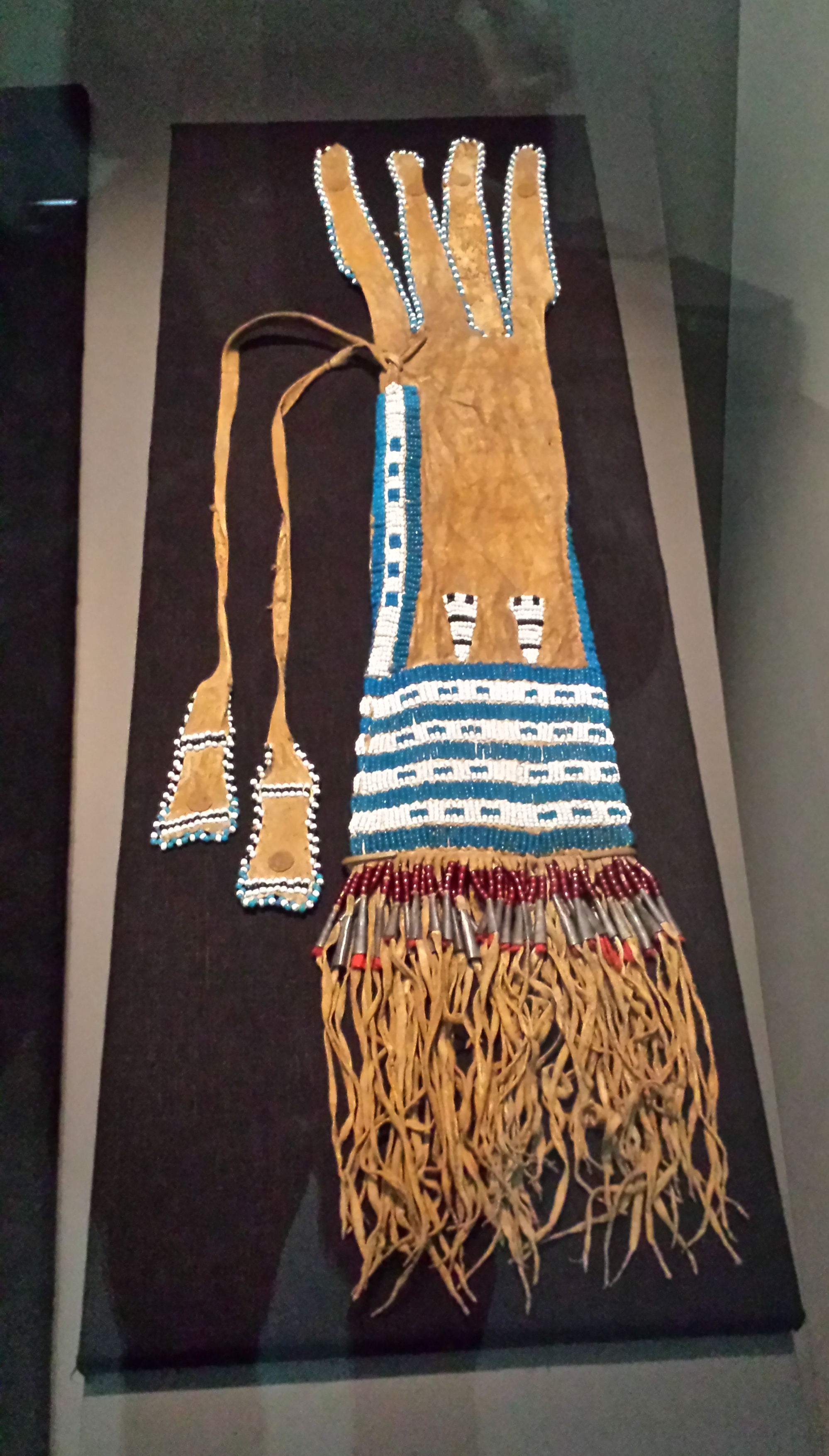 I knew I would glean details that would enrich my novels, and the Plains Indians exhibit did exactly that. But I was also awed at the beauty of many of the objects on display.
I knew I would glean details that would enrich my novels, and the Plains Indians exhibit did exactly that. But I was also awed at the beauty of many of the objects on display.
For example, here is a picture of a pipe and tobacco bag from the Central Plains about 1845, the time my characters were traveling to Oregon. The bag was called a cantohuja, or “container of the heart.” It received this endearing name because of the sacredness of the pipe to the native peoples. I don’t currently have a pipe ceremony in my Oregon Trail novel, but perhaps I will have to work one in. At the least, I can describe a beaded, fringed bag such as this.
I was also impressed at how well-preserved most of the pieces were. Many of the exhibits were centuries old but could still be worn or used today. As I thought about this, I realized the Nelson would only include the best examples of Native American art and culture. But in addition, it occurred to me that the more enlightened white travelers in North America in the 18th and 19th centuries viewed the native tribes as anthropological oddities, so would have preserved what they collected for posterity. (The unenlightened behaved savagely to peoples they thought of as savages.)
There are stories behind the preservation of the objects in the exhibit. Who collected them? On what travels? On what occasions? And what did the collectors do with the objects originally?
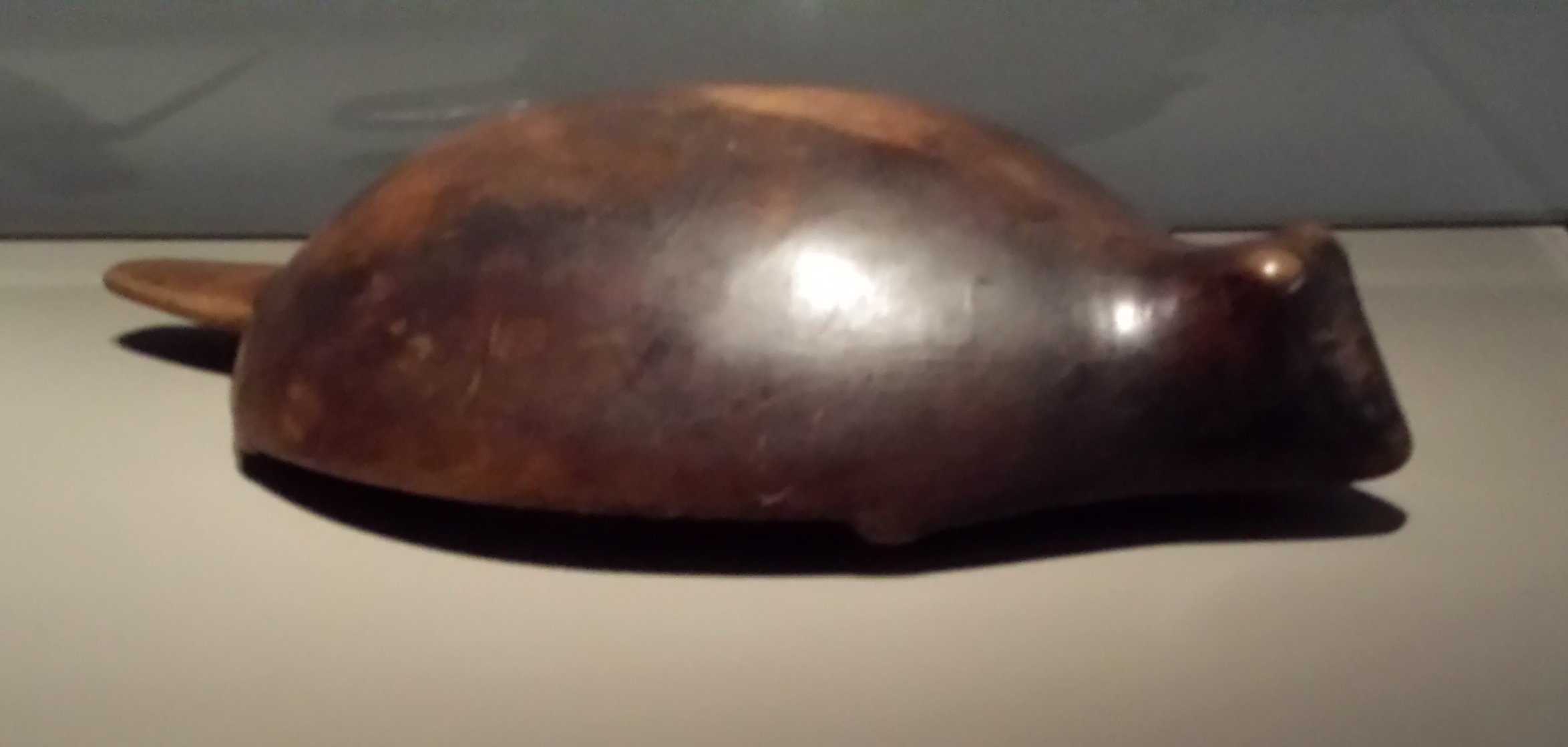 As an example of the preservation of the exhibited items, here is a walnut bowl carved to resemble a beaver from around 1800. It is better polished than the walnut salad bowls I own.
As an example of the preservation of the exhibited items, here is a walnut bowl carved to resemble a beaver from around 1800. It is better polished than the walnut salad bowls I own.
The Native Americans my emigrant characters encountered might well have used such a bowl as they ate with the white travelers. Would leftovers have been sent back to the wagons in such a bowl?
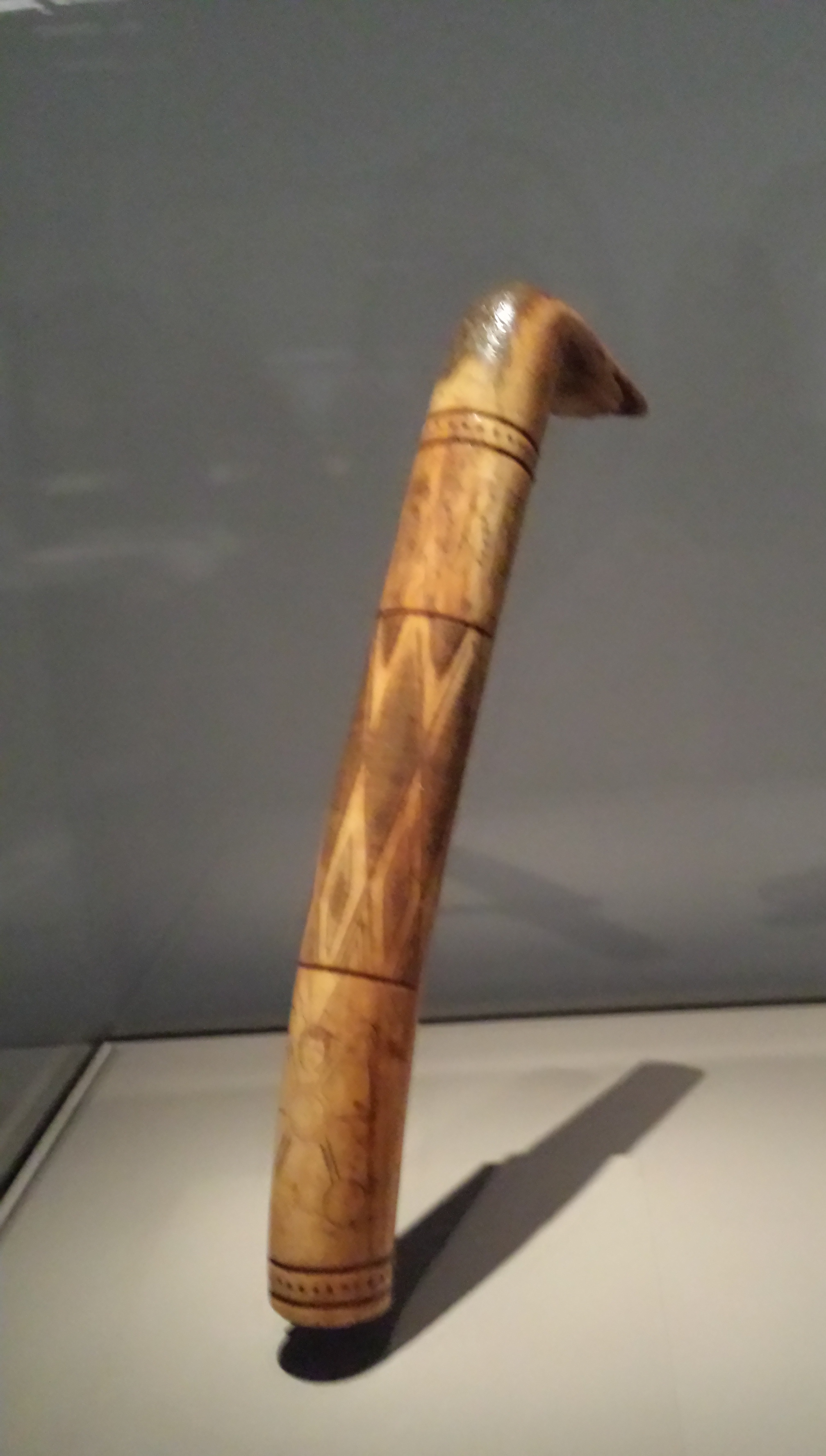 Another example is an elk antler scraper made in about 1820 used to prepare hides. I have written scenes where my characters buy hides and buffalo robes along the trail. The placard with the scraper informed me that this item might have been a woman’s most important tool. Note that even a utilitarian object such as this is highly decorated.
Another example is an elk antler scraper made in about 1820 used to prepare hides. I have written scenes where my characters buy hides and buffalo robes along the trail. The placard with the scraper informed me that this item might have been a woman’s most important tool. Note that even a utilitarian object such as this is highly decorated.
But my favorite object in the exhibit is the red stone pipe bowl shown below. It is from about 1820, and depicts a Pawnee myth involving a boy and bear. According to the description of the pipe, the bear derives power from the sun and the boy in turn receives power from the bear’s claws. It looks like it could still draw smoke.
I also wondered if a small child might play with such a pipe if he could get his hands on it. Perhaps a child in my novel could do exactly that.
The museum curators describe their exhibit as follows:
Together the 140 works will reveal the accomplishments of Plains Indian artists, not only as the makers of objects that sustain tradition and embody change, but as the bearers of individual creative expression and innovation.This description is accurate, but it doesn’t invoke my imagination the way the actual objects did. As I walked through the art and objects of daily living, I thought about the history of the native peoples and the emigrants who went through the prairies, about the humane and inhumane encounters between these peoples through decades of change, and about how our lives are different today because of these encounters.
The Nelson Plains Indians exhibit contains objects from around the United States from Massachusetts to California, the Dakotas to Texas, as well as those from museums and collections in England, France, Germany, and Switzerland.
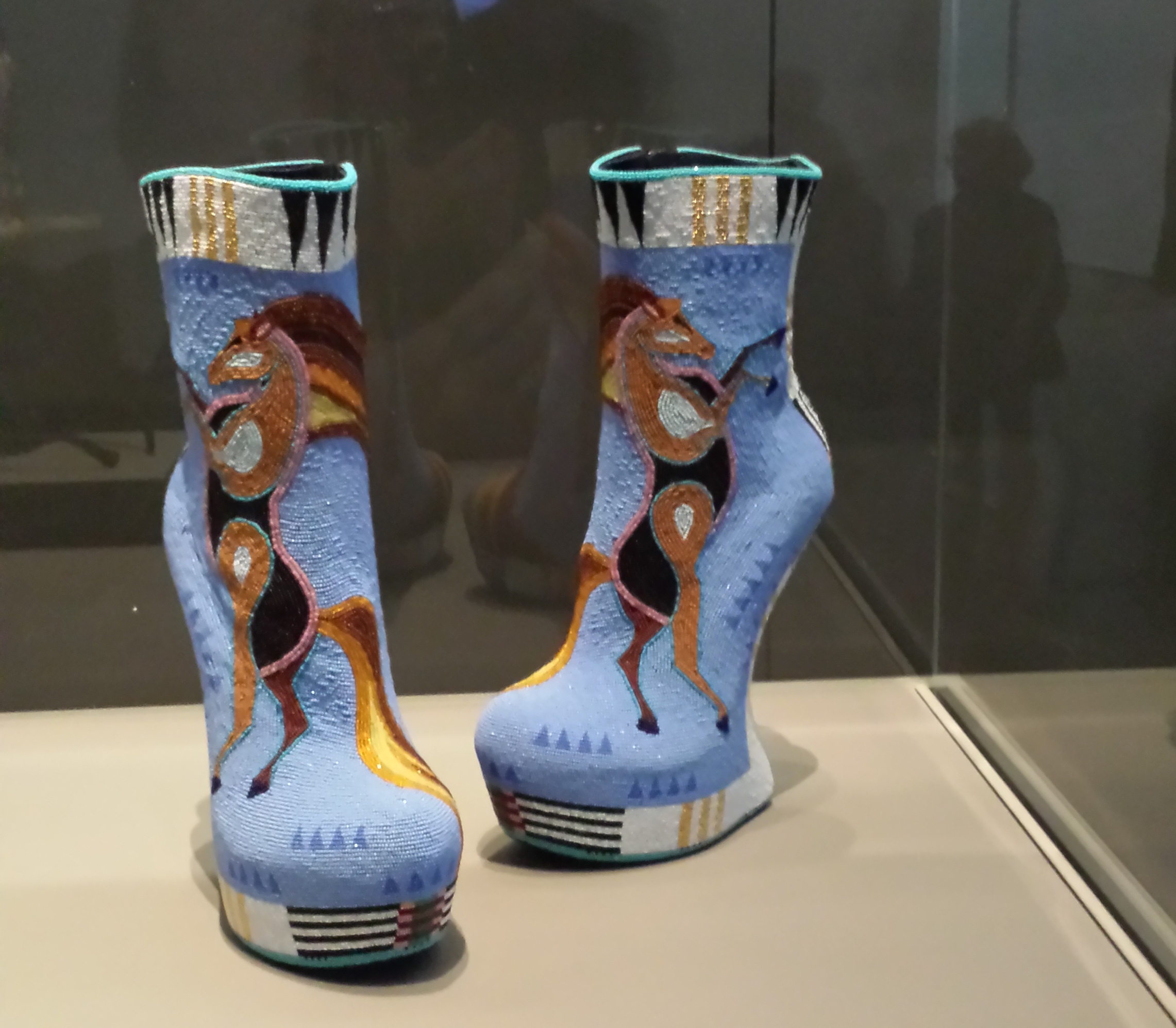 The Plains Indians exhibit displayed Native American artworks from the earliest discovered items all the way into modern creations. I admired this pair of beaded boots by Jamie Okuma made in 2014, though I must admit I preferred the older objects, which looked like they contained more stories.
The Plains Indians exhibit displayed Native American artworks from the earliest discovered items all the way into modern creations. I admired this pair of beaded boots by Jamie Okuma made in 2014, though I must admit I preferred the older objects, which looked like they contained more stories.
The Plains Indians exhibit will be at the Nelson until January 11, 2015. I encourage you to go see it—it is well worth your time. And, of course, you can also partake of the food and atmosphere in Rozelle Court while you’re there.
When have you been inspired by a museum exhibit?

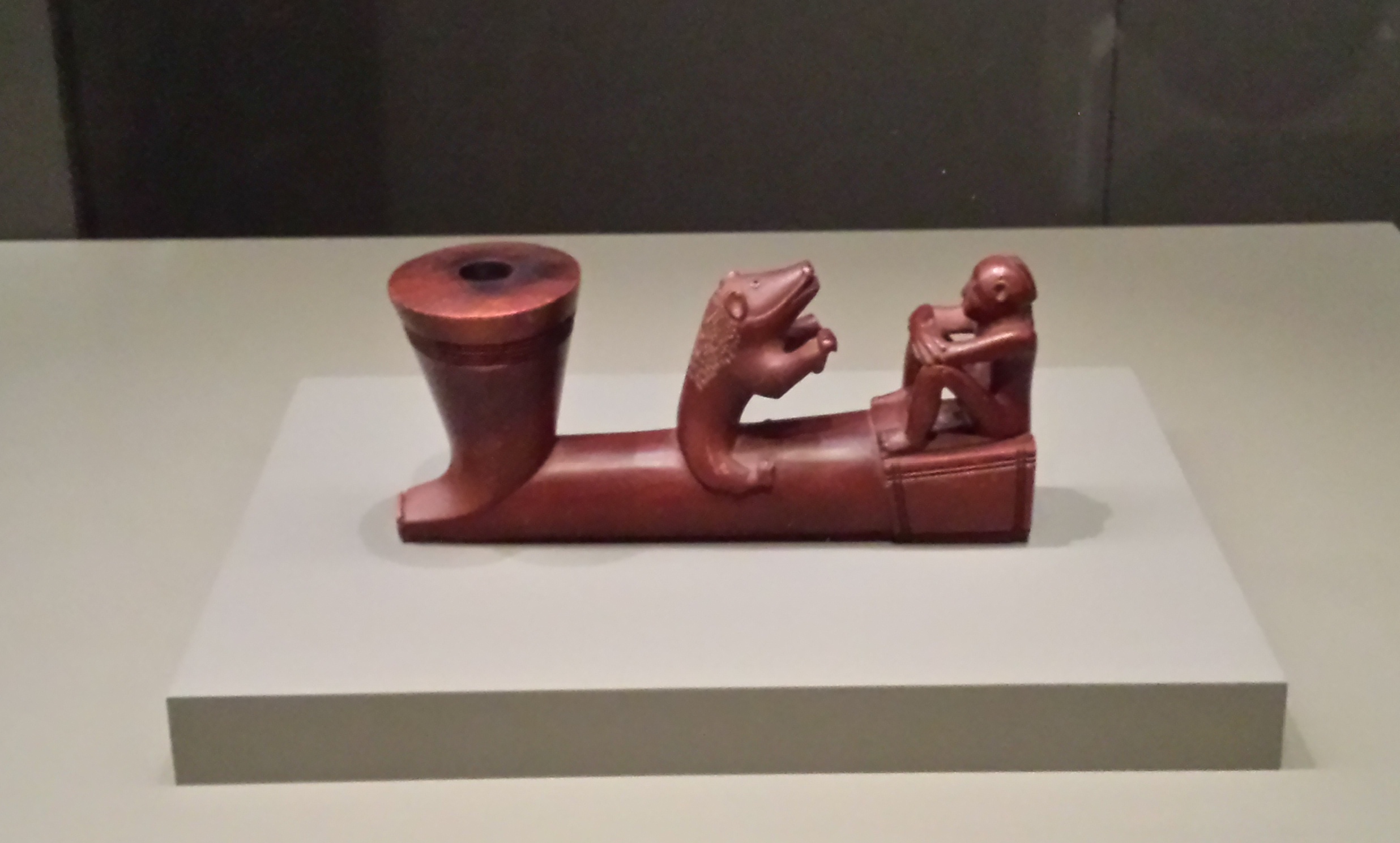



Diana, hope you enjoy it!
Theresa
What a great exhibit and so inspiring for your novels. Thanks for sharing it with us, Theresa.
I love how you’ve connected the exhibit with the characters in your novels. You’ve made them come alive for me, and now I’ll be reading your novels (I think I’m behind by one) and heading off to the Nelson.
Thank you, Dawn. You’re not behind, because I haven’t published either of the Oregon Trail novels yet. I’ll keep you posted!
And enjoy the Nelson exhibit in the meantime.
Theresa